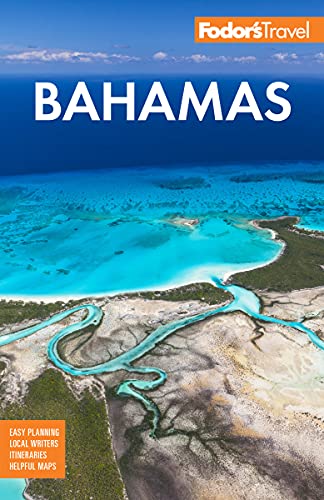Inagua National Park
Nothing quite prepares you for your first glimpse of the West Indian flamingos that nest in Inagua National Park: brilliant crimson-pink, up to 5 feet tall, with black-tipped wings. A dozen flamingos suddenly fly across a pond, intermixed with fantastic pink roseate spoonbills.
It's a moving experience, and yet because of the island's remote location, as few as 50 people witness it every year. By 1952, Inagua's flamingos had dwindled to about 5,000. The gorgeous birds were hunted for their meat, especially the tongue, and for their feathers. The government established the 287-square-mile park in 1963, and today 80,000 flamingos nest on the island, the world's largest breeding colony of West Indian flamingos. The birds like the many salt ponds on Inagua that supply their favorite meal—brine shrimp.
You must contact the Bahamas National Trust's office (242/393–1317www.bnt.bs) or Warden Henry Nixon (242/225–0977) to make reservations for your visit. All visits to the park are by special arrangement. 10 miles west of Matthew Town.
Best Time To Go
Flamingos are on the island year-round, but for the greatest concentration, visit during nesting season, from the end of February through June. Early morning and late afternoon are the best times to come. If you visit right after their hatching, the flocks of fuzzy, gray baby flamingos—they can't fly until they're older—are entertaining.
Best Ways to Explore
With a guide. Park warden Henry Nixon or Deputy Randolph Burrows lead all tours into the park and to Union Creek Reserve. They'll drive you by small flocks of flamingos in the salt ponds and answer questions. Nixon is difficult to reach by phone, but your best chance is in the early evening.
By kayak. You can't kayak in the park's salt ponds because they're too shallow, but you can in Lake Windsor, also called Lake Rosa, a huge inland lake. Its eastern half is in the park. Because of badly washed-out dirt roads, a truck is necessary to reach the lake.
On foot. The best way to see flamingos up close is by parking the car and walking, or sitting quietly for a while in a thicket of mangroves. Flamingos are skittish and easily spooked. Although the ponds and mangroves look a lot like the Florida Everglades, there are no alligators or poisonous snakes here. Make sure you have insect repellent on before you take off; the mosquitoes are brutal.
Union Creek Reserve
On the northwest side of the park, Union Creek Reserve hosts the University of Florida's Archie Carr Center for Sea Turtle Research. The 7-square-mile site is home to green and hawksbill sea turtles; visitors can prearrange a visit to see the big guys up close and talk with the staff.
Flamingo Facts
Flamingos are the country's national bird, and they're protected from hunters by law.
Female flamingos lay one egg a year, and both parents take turns sitting on it for 28 days. Both parents also produce milk in the crop at the base of the neck for the chick, for three months. The parents' feathers turn white while they feed the chick because they lose carotene.
Flamingos are monogamous and usually mate for life, but are extremely social birds that like to live in groups.
Their "knees," which seem to bend backward, are actually ankles (the knees are tucked under their feathers). What looks like the leg is actually the foot extending from the ankle.
Standing on one leg is the most comfortable position for a flamingo.
Brine shrimp, the flamingo's main source of food, is what gives the mature bird its brilliant deep pink.




